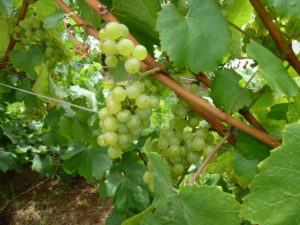Grapevine breeding
CSIRO maintains a major grapevine germplasm collection of many varieties and species at its Koorlong site near Mildura in the border region of New South Wales and Victoria.
This collection underpins a grapevine breeding program that began in the 1960s.
Although breeding for improved varieties of dried and table grapes is being phased out, breeding for novel, disease-resistant wine grapes continues.
We are also conducting a rootstock breeding program with the aim of developing improved genotypes suited to Australian conditions for viticulture.
Wine grapes
Dried grapes
Most of the Australian dried-grape industry relies on CSIRO-selected clones and varieties. These include:
- standard Sultana H5 clone
- rain-tolerant currant variety Carina
- rain-tolerant sultana types, Sunmuscat and Sunglo (both joint developments with the United States Department of Agriculture)
- disease-resistant currant variety Black Gem*, ideal for organic production.
Table grapes
CSIRO’s table grape breeding program has released:
- Marroo seedless, a large seedless black grape
- M 51-18*, an early ripening seeded, muscat flavoured grape
- M 13-01*, a seedless black grape with tapered berries and vivid green bunch stems.
- M 44-14*, a seedless white grape with large yields of high quality cream-yellow, crisp-textured berries.
*’Black Gem’, ‘M 51-18’, ‘M 13-01′ and M 44-14’ are grape varieties protected under Australian Plant Breeders Rights legislation (UPOV compliant legislation).

